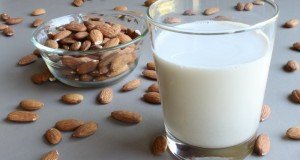Higher vitamin D levels REDUCE the risk of liver cancer by up to 50%
(Naturalhealth365) Of all forms of cancer, liver cancer – which claims over 24,000 lives a year in the United States alone – is one of the most dreadful. But, the real tragedy is how Western medicine continues to ignore the healing (and protective) power of nutrition – especially the value of maintaining higher vitamin D levels.
The U.S. Centers for Disease Control and Prevention (CDC) reports that cancer rates have been rising for the past few decades (especially liver cancer) – which is why there’s an urgency (by researchers) to identify effective and safe means of prevention. Now, a new study linking higher vitamin D levels to lower rates of cancer – particularly liver cancer – is giving scientists hope that this natural substance can stem the tide of disease and premature death.
Great NEWS: Higher vitamin D levels have the potential to slash liver cancer risk in half
In a study published in The BMJ Today, researchers analyzed data from a Japan Public Health Center-based prospective study involving 33,736 Japanese adults aged 40 to 69 years.
Participants were followed for an average of 16 years – during which time 3,301 new cases of cancer were reported – and blood samples were taken regularly to measure vitamin D levels.
The researchers found that higher levels of vitamin D were associated with a 20 percent lower risk of cancer overall in both men and women. But, the association was particularly pronounced when it came to liver cancer – with higher vitamin D levels associated with up to 50 percent reduction in relative risk.
Naturally, the researchers called for further study to clarify optimal concentrations of vitamin D for cancer prevention.
Higher vitamin D levels protect against breast cancer as well
The good news about vitamin D’s ability to help protect against liver cancer is echoed by other studies revealing lower breast cancer risk for those with higher levels.
In the Sister Study – a groundbreaking study assessing breast cancer risk among women with sisters who had been diagnosed with breast cancer – researchers investigated serum levels of vitamin D, and found that having least 38 nanograms (ng) per milliliter was associated with a 21 percent lower risk of breast cancer – when compared to vitamin D levels of 24.6 ng/mL or less.
The researchers found that taking vitamin D supplements at least four times a week also reduced breast cancer risk. Additional studies have shown that getting sufficient sunlight is linked with an astonishing 70 percent reduction in breast cancer risk.
And, in the event that breast cancer does develop, it appears that the “sunshine vitamin” could have potentially lifesaving effects. In a study published in JAMA Oncology, breast cancer patients with the highest blood serum vitamin D levels had the highest likelihood of surviving the disease.
Conflicting advice on vitamin D levels leads to confusion
When it comes to governmental recommendations for maintaining healthy vitamin D status, some agencies seem to “drop the ball.”
For instance, the Institutes of Medicine (IOM) advise blood levels of 20 ng/mL of vitamin D. However, many integrative physicians point out that this amount is barely enough to ward off outright vitamin D deficiency – which is defined as any level under 20 ng/mL.
And vitamin D deficiency can cause a variety of health problems.
Recent research has shown that people with vitamin D levels below 20 ng/mL are at increased risk of muscle injuries such as strains, sprains and hernias. And studies have shown that people with under 10 ng/mL of vitamin D have a 122 percent higher risk of developing Alzheimer’s disease.
In addition to being associated with raised cancer risk, low vitamin D status is linked with Parkinson’s disease, multiple sclerosis, depression and pneumonia.
So, what is an ideal concentration of vitamin D?
When it comes to health benefits and cancer prevention, most integrative healthcare providers advise at least 40 ng/mL. Studies have shown that this concentration is linked with up to 67 percent lower risk of developing cancer overall.
(Note: while 40 ng/mL is a better goal to strive for than 20 ng/mL, it is the 50 ng/mL to 80ng/mL range that seems to provide maximum health benefits.)
Best of all: a simple blood test can help you determine if – like 40 percent of all Americans – you are at risk of vitamin D deficiency.
How much vitamin D should I take?
Vitamin D is generated in the skin in response to sunlight and is also found in some foods – such as mushrooms, cold-water fatty fish, eggs, and soy. This indispensable nutrient regulates levels of calcium in the body, maintains strong teeth and bones, and is essential for the function of the heart and the immune system.
Natural health experts recommend getting 20 minutes of direct sunlight several times a week to help maintain vitamin D status. But, depending on your body weight, lifestyle and even your geographic location (which determines the effectiveness of sunlight exposure), supplementation may be needed in order to achieve optimal levels.
Unfortunately, it can be quite frustrating to sort through the maze of conflicting recommendations.
The Institutes of Medicine advises 600 IU of vitamin D a day for adults – with 4,000 IU a day classified as the “tolerable upper level.” Yet, natural health experts insist this dosage is far too low.
The Vitamin D Council maintains that adults should take at least 5,000 IU daily, while it is not uncommon for functional (integrative) physicians to advise dosages in the range of 8,000 IU a day – double the limit set by the IOM. Meanwhile, the Endocrine Society calls for 10,000 IU a day.
In a recent study involving 3,882 participants and published in Dermato-endocrinology, researchers found that people with normal body mass needed 6,000 IU of vitamin D per day to reach concentrations of 40 ng/mL. Overweight individuals needed 7,000 IU, while obese people needed 8,000 IU.
The team noted that there was no evidence of vitamin D toxicity, despite administering vitamin D in amounts that far surpassed the IOM recommendation.
In addition, experts recommend taking vitamin D in the form of cholecalciferol, or vitamin D3 – which is more effective than vitamin D2 (the alternate form) in raising concentrations of vitamin D throughout the body.
(Note: vitamin D3 works closely with vitamin K2 to modulate calcium in the body and help prevent calcified plaque from forming in arteries. For every 5,000 to 10,000 IU of vitamin D taken, experts advise adding 100 mcg of vitamin K2. Naturally, you should first consult with your qualified integrative doctor).
The evidence continues to accumulate regarding vitamin D’s monumental impact on health and wellness – and its value in the prevention of deadly diseases such as cancer. Ensuring that you have enough of the “sunshine vitamin” is truly a wise move.
Editor’s note: Does your vitamin D contain K2?*
*And, yes, your purchases help to support our operations at NaturalHealth365.
Sources for this article include:











